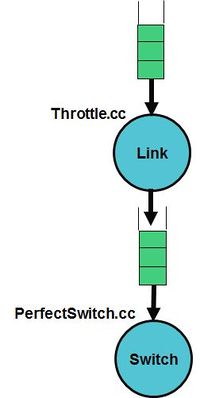Difference between revisions of "Simple"
From gem5
(→Simple Network) |
m |
||
| Line 1: | Line 1: | ||
| − | + | == Simple Network == | |
The default network model in Ruby is the simple network. | The default network model in Ruby is the simple network. | ||
Revision as of 01:39, 25 September 2016
Simple Network
The default network model in Ruby is the simple network.
Configuration
Simple network uses the generic network parameters in Network.py:
- number_of_virtual_networks: This is the maximum number of virtual networks. The actual number of active virtual networks is determined by the protocol.
- control_msg_size: The size of control messages in bytes. Default is 8. m_data_msg_size in Network.cc is set to the block size in bytes + control_msg_size.
Additional parameters are specified in simple/SimpleNetwork.py:
- buffer_size: Size of buffers at each switch input and output ports. A value of 0 implies infinite buffering.
- endpoint_bandwidth: Bandwidth at the end points of the network in 1000th of byte.
- adaptive_routing: This enables adaptive routing based on occupancy of output buffers.
Switch Model
The simple network models hop-by-hop network traversal, but abstracts out detailed modeling within the switches. The switches are modeled in simple/PerfectSwitch.cc while the links are modeled in simple/Throttle.cc. The flow-control is implemented by monitoring the available buffers and available bandwidth in output links before sending.
More details of the gem5 Ruby Interconnection Network are here.
